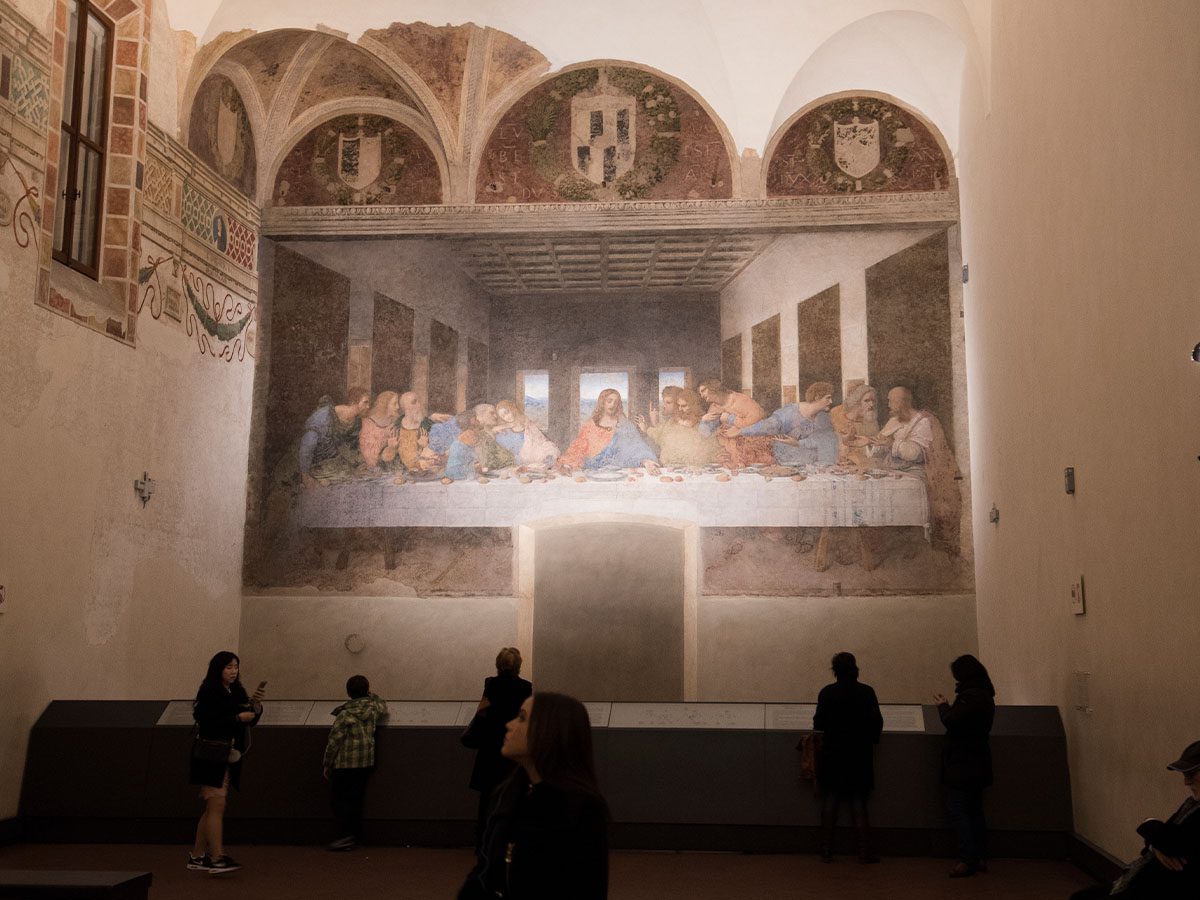
With the Christmas holiday past, the church calendar now looks to the next major holiday of the faith: the Easter season. Nothing encapsulates the impending drama of the Crucifixion like the infamous “Last Supper” painted by Leonardo da Vinci when he was around 43 years old. The painting, having been worked on by da Vinci from about 1496 to 1498 remains in the former Dominican convent of Santa Maria delle Grazie in Milan, Italy, and stands at a staggering 15 feet high and 29 feet wide. It remains extremely popular, particularly during the Christmas season, drawing in over 460,000 visitors per year.
The painting refers to the last supper that Jesus attends with his disciples just before he is arrested and ultimately sent to be crucified, as described in the Gospels. The scene particularly emphasized the moment in John 13:21 when Jesus says one of his disciples will betray him. The disciples can be shown grappling with the news that one of them will betray Jesus while he continues to look on peacefully. During the meal, Jesus establishes the Christian sacrament of Communion.
Access to the painting is extremely restricted, with groups no larger than 25 people being permitted to view the work every 15 minutes. The limited access is meant to maintain the temperature of the room and protect the painting’s integrity. Visitors must also adhere to a dress code that prohibits shorts and tank tops. Visitors also must remain silent during their observation time and are not permitted to take any pictures with flash photography.
“The Last Supper” has captured imaginations throughout its over 500-year history. In 2003, Dan Brown stirred interest and controversy with the release of his book, The Da Vinci Code. “The Last Supper” features prominently in the book as a clue to the book’s leading mystery, with the beardless character of John, who is seen reclining next to Jesus in the painting, being hypothesized to actually be Mary Magdalene, who was Jesus’s wife according to the book. The book was largely criticized by the religious faithful at the time of its release, particularly the Catholic Church, but it certainly didn’t hurt the work’s popularity. It continues to draw in viewers from all over the world who seek to catch a glimpse of one of the most pivotal moments in human history.


